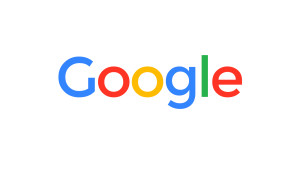Google Cardboard, looks like a pair of square goggles that can be used to hold an iPhone and see images in three dimensional from the devices. Sold around $20, who can imagine that it actually has helped saved a baby’s life?
Teegan Lexcen, born in August, was missing one lung and almost all of the left half of her heart. She has an unusual condition, according to doctors. Her parents, Cassidy and Chad Lexcen, said their doctors in Minnesota told them there was nothing they could do.
After staying home for nearly two months with a hospice nurse and medications, Teegan was still alive, which made the parents wonder if the doctors were right.
The Lexcens found a family friend who worked in a cardiac intensive care unit in Boston. They sent the pictures of Teegan’s heart taken at the Minnesota hospital under doctors’ requests. When they finally heard back two weeks later, the reply made it clear that they should act soon.
“I felt like we were racing against the clock,” Cassidy said.
Soon after, Chad’s sister found an article entitled “The 20 Most Innovative Pediatric Surgeons Alive Today.” No. 3 was Dr. Redmond Burke, the chief of cardiovascular surgery at Nicklaus Children’s Hospital in Miami.
Chad’s sister reached out. The reply came soon after: ”Please send images immediately, we’ll see what we can do.”
On a Wednesday morning in November, 30 cardiac doctors and nurses sat in a room at Nicklaus Children’s Hospital and looked at pictures of Teegan’s heart. These doctors, like the ones in Minnesota, had never seen a child who was missing a lung and nearly half a heart,e ither. The treatment plan seemed to be hopeless.
Burke asked Dr. Juan Carlos Muniz, a pediatric cardiologist who specializes in imaging, to make a 3D model of Teegan’s heart. It had helped in complicated cases before. Unfortunately, the hospital’s 3-D printer was broken.
Yet, it turned out to be the turning point in the case. Muniz had been chatting with Dr. David Ezon, a pediatric cardiologist at the University of Pittsburgh Medical Center, about using virtual reality for playing videos of children’s hearts.
After that discussion, Muniz bought a Google Cardboard device.Using an app called Sketchfab, Muniz downloaded images of Teegan’s heart onto his iPhone and showed them to Burke. These devices made it possible to move around and see outside the heart from every angle, and almost inside.
Four-month-old Teegan was sent into the operating room on December 10.
While her heart structure was abnormal and was hard to reach, Google Cardboard showed such a big advantage over 3D printer. The printer would have given Burke just her heart — but to access her heart surgically, he needed to be able to visualize it in context with the other inside structures. With the use of the virtual image, Burke figured out a way to operate using a standard incision.
Google Cardboard helped Burke along the way of surgery. It actually showed the exact picture of her heart which made it much easier for him in the operating room. He proceeded with no surprises. “Sometimes that’s what makes the difference between life and death,” he said.


